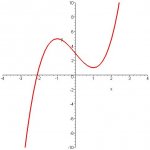Hello to my lovely fellow math help forum posters,
I am in need of help with the following problems involving evaluating integrals. I took a picture of the problems that I need help with. It's 3 integral problems and 1 derivative problem involving max/min etc.

I would appreciate any help that can be given!!! I need help on the steps to this method.. step by step. Can someone write the steps out and take a picture of it and post it up because its easier than writing *int* instead of the integral sign? :?:
Thanks
I am in need of help with the following problems involving evaluating integrals. I took a picture of the problems that I need help with. It's 3 integral problems and 1 derivative problem involving max/min etc.

I would appreciate any help that can be given!!! I need help on the steps to this method.. step by step. Can someone write the steps out and take a picture of it and post it up because its easier than writing *int* instead of the integral sign? :?:
Thanks

